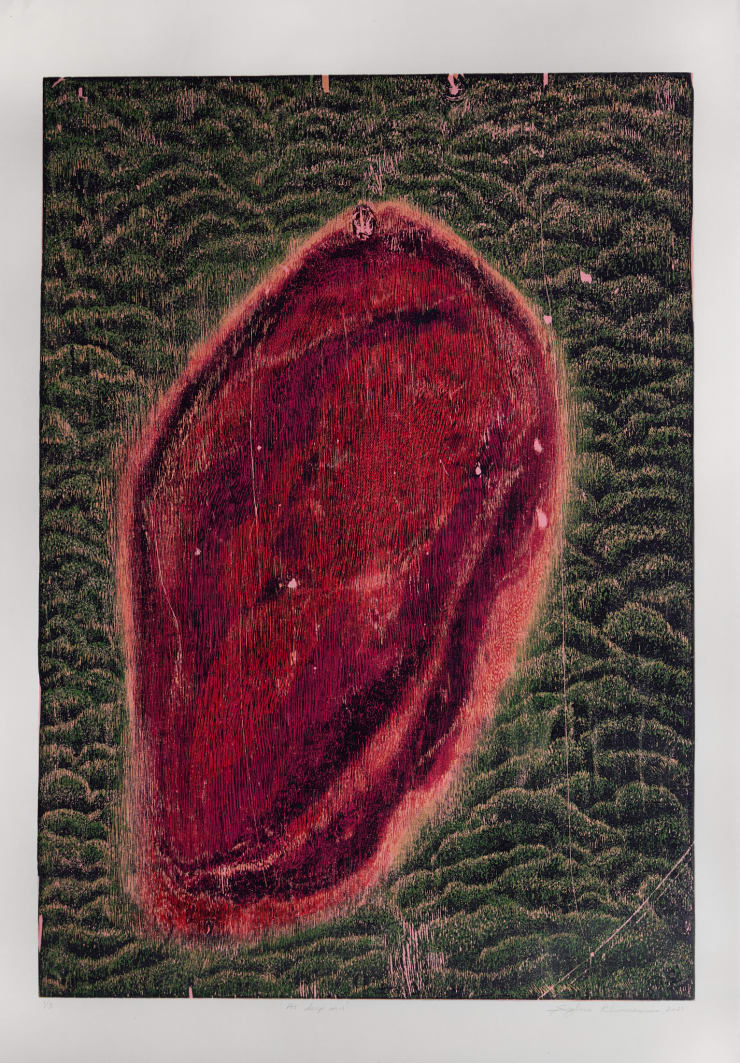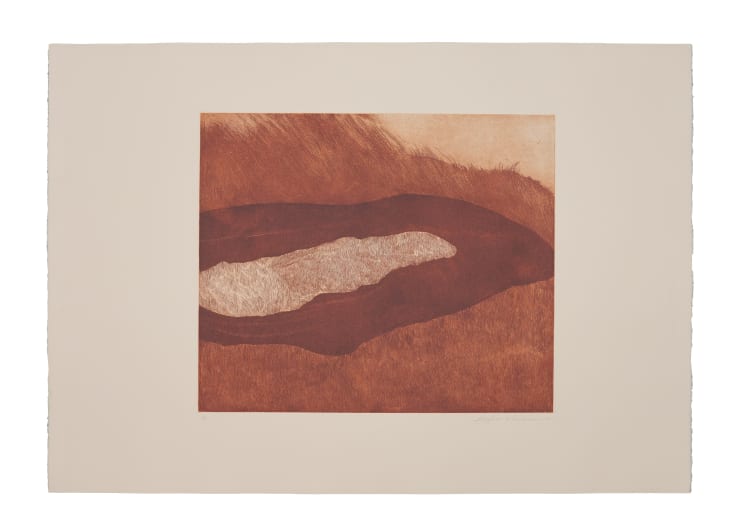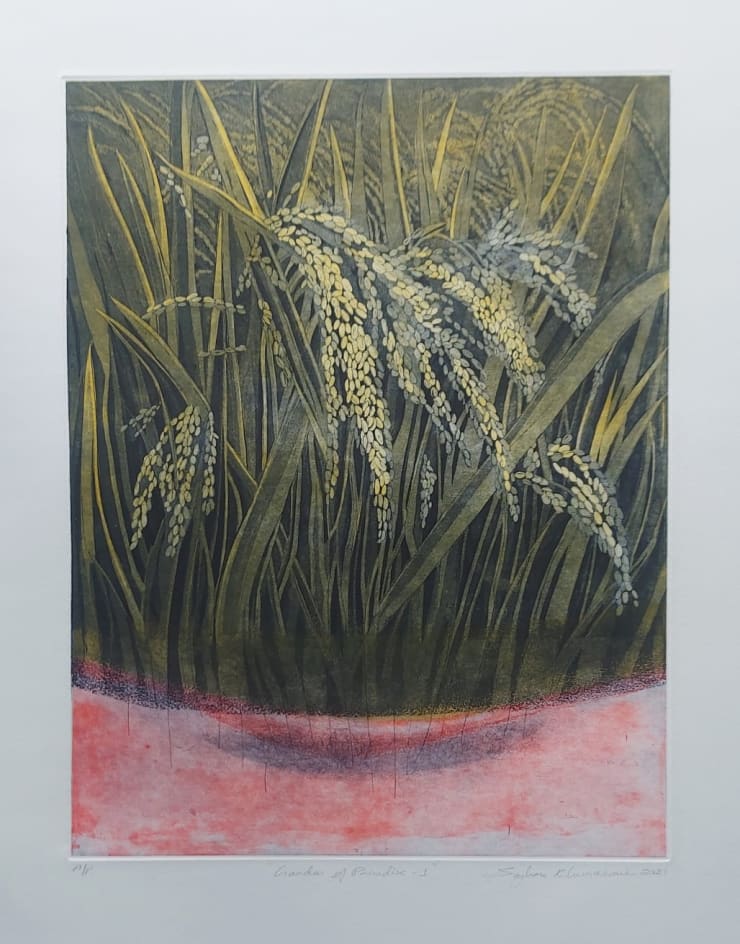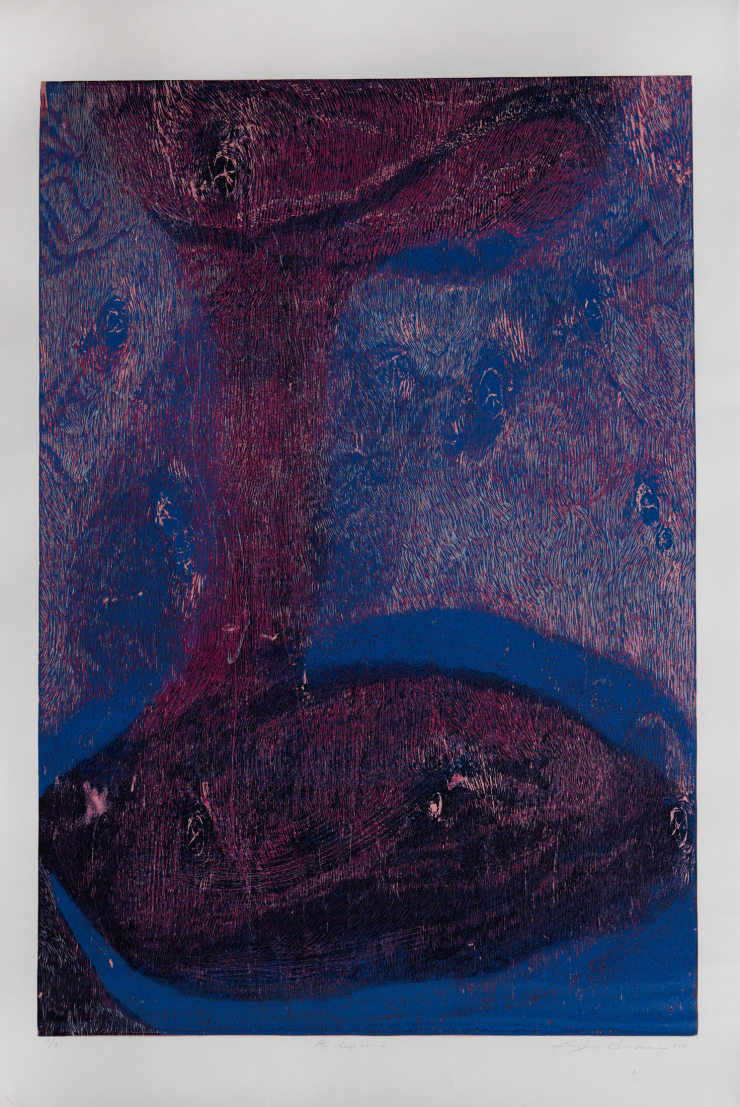-
-
An excerpt from the catalogue essay written by Nancy Adajania, "Soghra Khurasani’s recent exhibition – ‘Shadows Under My Sky’ – marks a transition from the high colour and operatic gestures of her earlier prints to a gentler, more reflective register. The fissured earth and volcanic craters are no longer cast in harsh reds and pinks. The artist now dwells on luminous evocations of night, quiet fields, emerald islands and wetlands that nurture processes of germination. Soghra has spoken of her feeling of having been ‘labelled’ through stereotypes of gender, religion and ethnicity, and has resisted such mechanisms of Othering. In her new work, she establishes a solidarity with those who nourish an earth that has for too long been exploited for its mineral and vegetable fecundity. Having herself become involved in small-scale cultivation around her studio on the outskirts of Baroda, she finds a natural affinity with the farmers whose protests have spearheaded a resistance to the Indian State’s attempt to privatise agriculture and concentrate it in the hands of a corporate oligarchy. Soghra’s previous disquiet at being Othered and her more recent preoccupation with the diversity of India’s environment come together in works where she depicts marsh grass, emblematic of the wetlands that are not recognized by the Forest Act, which is more closely linked to revenue classification than to ecological sensitivity. These seemingly marginal zones are, in fact, essential to the health of the ecosystem. The marsh grass becomes symbolic, in Soghra’s lexicon, for the ‘unwanted’ that, in fact, holds the promise of regeneration. We are mesmerized by this woodcut, which, along with the quintessential high horizon line of Soghra’s works, projects both resilience and serenity. "
-
Woodcut Prints and Woodblocks
-
-
ABOUT THE ARTIST
Soghra Khurasani (b.1983) got her Post Graduate Degree in Print Making (with Distinction) from M.S. University of Baroda, 2010 and Undergraduate Degree in Painting from Andhra University, Vishakhapatnam, 2008. She has shown extensively in India and the USA, and has participated in several group shows.
Her work deals in the medium of printmaking, mostly in techniques of woodcuts and etching prints. She also explores digital print, text, and videos, through which she express ideologies of beauty and violence. Trained as a printmaker, in her large- scale woodcut prints she focuses more on traditional techniques, working on layers of colour, line and texture.
She has participated in the Beisinghoff Printmaking Residency, Women’s Studio Workshop, Germany (2018), Khoj Kooshk Residency Exchange Program in Tehran and Delhi (2016) amongst others. She is the recipient of 56th National Academy Award at Lalit Kala Akademi, Rabindra Bhavan New Delhi, 2015.
She lives and works in Baroda, Gujarat.
Shadows under my sky: Soghra Khurasani
Current viewing_room
























